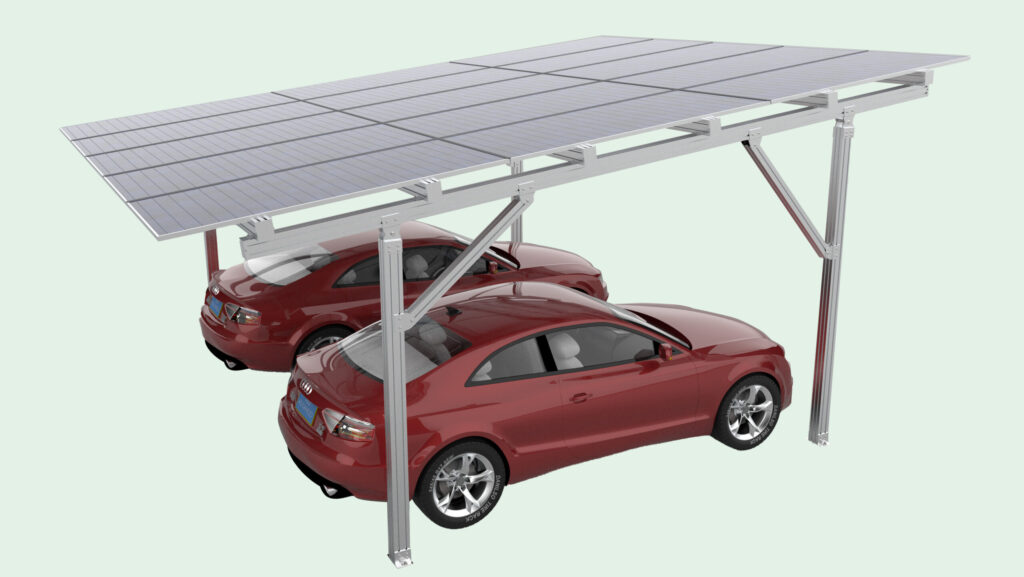When choosing the installation location of solar panels, multiple factors need to be considered to ensure their efficient operation and compliance with safety and regulatory requirements. The following are the matters needing attention when choosing the installation location of solar panels:
First, sunlight exposure conditions
Optimal orientation:
In the Northern Hemisphere (such as China), the best orientation for solar panels is usually due south to receive the maximum amount of sunlight. If conditions do not permit, facing southeast or southwest is also acceptable, but installation facing north should be avoided as it receives less sunlight when facing north.
Tilt Angle:
The tilt Angle of the solar panel should be adjusted to the Angle that maximizes the power generation of the panel. This Angle is related to the local geographical latitude and is usually equal to or slightly higher than the local latitude. For example, the inclination Angle in the area south of the Yangtze River can be set at 30 degrees, and in the area north of the Yangtze River, it can be set at 45 degrees.
Avoid occlusion:
Make sure there are no trees, buildings or other obstructions at the installation site, as these obstructions will reduce the sunlight received by the solar panels and affect the power generation efficiency. Before installation, a comprehensive assessment of the installation location should be conducted, including considering the movement trajectory of the sun in the sky and changes in the surrounding environment.
Second, residential types and spatial layout
Villa-type residences
Rooftops and surrounding open Spaces are usually privately owned by families, so solar panels can be installed on rooftops or open Spaces in front of houses facing the best direction. Before installation, it is necessary to ensure that the roof structure can bear the weight of the solar panels.
Multi-storey or high-rise unit-type residences
Since residents usually do not have the right to use the roof, it can be considered to install the solar panels on the balcony, exterior window or exterior wall facing the best direction. However, it should be noted that the installation at these locations may require approval from the property management or relevant departments.
Spatial layout
According to the space limitations of the installation site, the layout of the solar panels should be reasonably planned. Ensure that the intervals between the solar panels are not affected to facilitate later maintenance.
Third, climatic conditions
Light intensity
Select areas with higher light intensity to install solar panels to enhance power generation efficiency.
Climatic conditions:
Consider the local climatic conditions, such as temperature, humidity, wind speed, etc. These factors may affect the performance and lifespan of solar panels. For instance, under extreme weather conditions, it might be necessary to enhance the fixation and protection measures of the solar panels.
Fourth, safety and protective measures
Lightning strike protection measures:
Solar panels installed on rooftops or outdoors should have lightning protection measures and can be reliably connected to lightning protection and grounding devices on rooftops or the ground through metal conductors.
Firmly fixed
Make sure the solar panels are installed firmly to prevent the influence of bad weather such as strong winds. Before installation, the installation bracket should be thoroughly inspected and tested.
Fire prevention measures:
Appropriate fire prevention measures should be taken in the solar panels and their surrounding areas to reduce the risk of fire.
Fifth, the impact on the surrounding environment
Noise and light pollution
When choosing an installation location, the impact on the surrounding environment, such as noise and light pollution, needs to be taken into consideration. Ensure that the operation of the solar panels does not cause disturbance to the surrounding residents.
Aesthetic appeal
Where possible, install the solar panels in positions that do not affect the aesthetics of the building. For instance, the solar panels can be installed on the roof instead of on the conspicuous exterior walls.
Sixth, Policies and Regulations
Understand the local regulations:
Different regions may have different policies and regulations restricting the installation of solar power generation equipment. Before choosing an installation location, it is necessary to understand and abide by the relevant local regulations. For example, it might be necessary to obtain building permits or power access permits, etc.
Compliance
Ensure that the installation process complies with local building, power and safety regulations. Before installation, it is recommended to consult the local relevant departments or professionals to obtain accurate guidance.
Seventh, other precautions
Maintenance convenience:
Choose an installation location that is easy to maintain to facilitate regular cleaning and inspection of the solar panels.
Long-term benefits:
When choosing the installation location, the long-term benefits of the solar panels should be taken into consideration. For instance, choosing a location with abundant sunlight and no obstructions can enhance the service life and power generation efficiency of the solar panels, thereby increasing long-term benefits.


